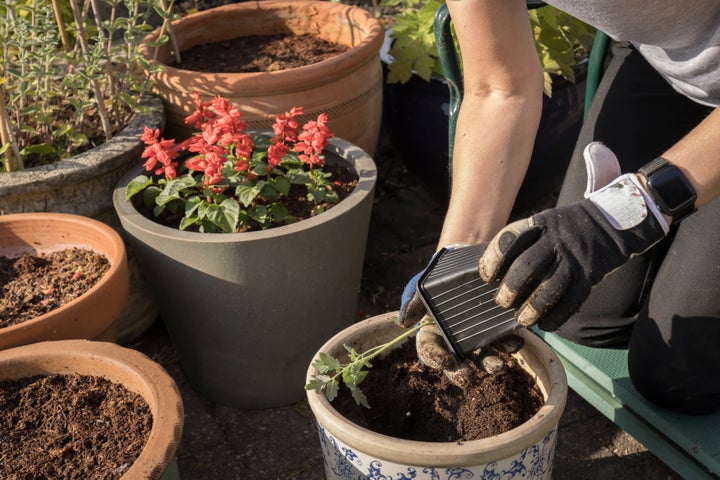
If, like 88% of Brits, you’ve got a garden, chances are you’ve splashed a good bit of cash to create your ideal yard. “The average total spending per adult with a garden was 670 British pounds,” Statista shared in 2021 – and I don’t reckon inflation has made that number any nicer.
Even with all that spending, though, house-builders Redrow shared that roughly “one in four (Brits) haven’t seen worms (27%), a butterfly (26%) or snails (24%) in the last month.″
They add that “66% of garden owners (are) keen to encourage wildlife at home, but are put off by not having expert knowledge, skills, and cost.”
Thankfully, HuffPost UK spoke to gardening pro and writer Arthur Parkinson, who offered tips on the best item to bring some life to your lawn – among other tips.
So, we thought we’d share some of his best wildlife-encouraging hacks, alongside the one item he recommends all gardeners add to their outdoor area.
Good news – you don’t have to spend all that much on your lawn
”There are loads of cheap ways of getting a garden. It’s not an expensive thing to do, it’s just about researching what your soil is and also what light you’ve got,” Parkinson told HuffPost UK.
Cheap hacks to make your lawn flourish include emptying the contents of a chamomile teabag onto the bare bits of your lawn, Parkinson shared. “You will then get chamomile within a summer season.”
Wildflowers, especially native species like chamomile, are friendly to bees and other pollinators. So if you’re looking to bring some trellis-side traffic to your garden, it’s a pretty easy (and inexpensive) trick.
The gardening expert also recommends not buying pesticides or herbicides.
“If you’ve got children, if you’ve got pets, you shouldn’t be using chemicals. But what’s worse is if you are using chemicals, you’re killing our pollinators, which we need for food production. I am very much against any chemicals and herbicides being used,” Parkinson said.
Adding a birdbath to your garden could seriously improve its activity
“Have a birdbath, because you might not want to feed the birds, but if you can just have a little source of water on a table, the amount of birds that will come into your garden is incredible. I just wanted to add that,” the pro added to his list of tips.
The more species, both plant and animal, you bring to your garden, the better – and some birds can act as a natural, chemical-free pest control, too. It doesn’t need to be a full-on ornamental bath, either; so long as there’s water available to our feathered friends, they’ll flock (sorry) to your garden.
The Royal Society for the Protection of Birds (RSPB) says that birdbaths “need to have shallow sloping sides with a shallow approach to water.” Ensure the sides are rough enough for the birds to grip without slipping in, and make sure the water is between 3.5cm and 10cm deep to allow multiple species to drink up.
“The simplest bird bath is a plant saucer with textured finish and a stone in the middle. You could set several of these around your garden,” the RSPB says, adding that “you could use a dustbin lid sunk into the ground, or supported on stones or posts. If the lid is shiny or slippery, a thin layer of gravel on the bottom (this makes it more difficult to clean though) and a shallow stone in the middle will help birds get to the water in comfort.”
A water source is especially useful to birds during the summer, so it might be something you want to add sooner rather than later.